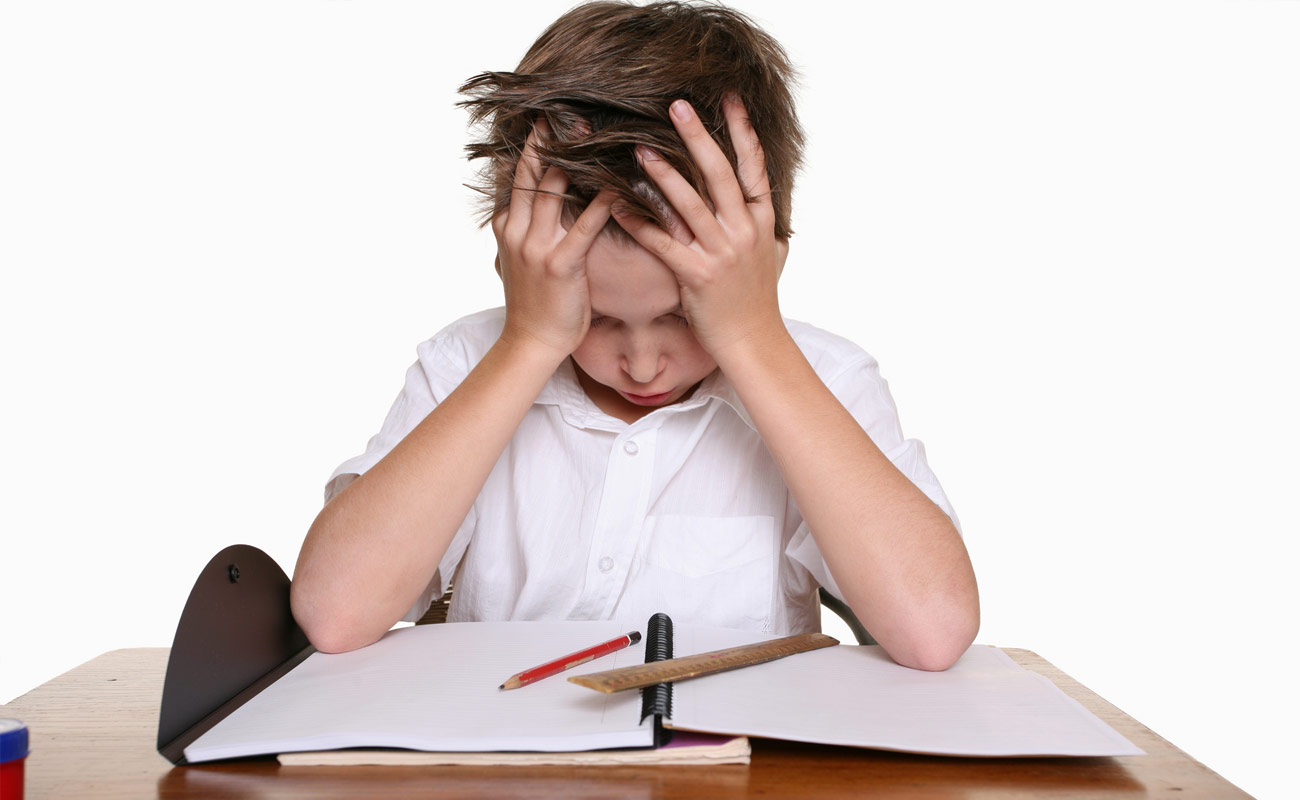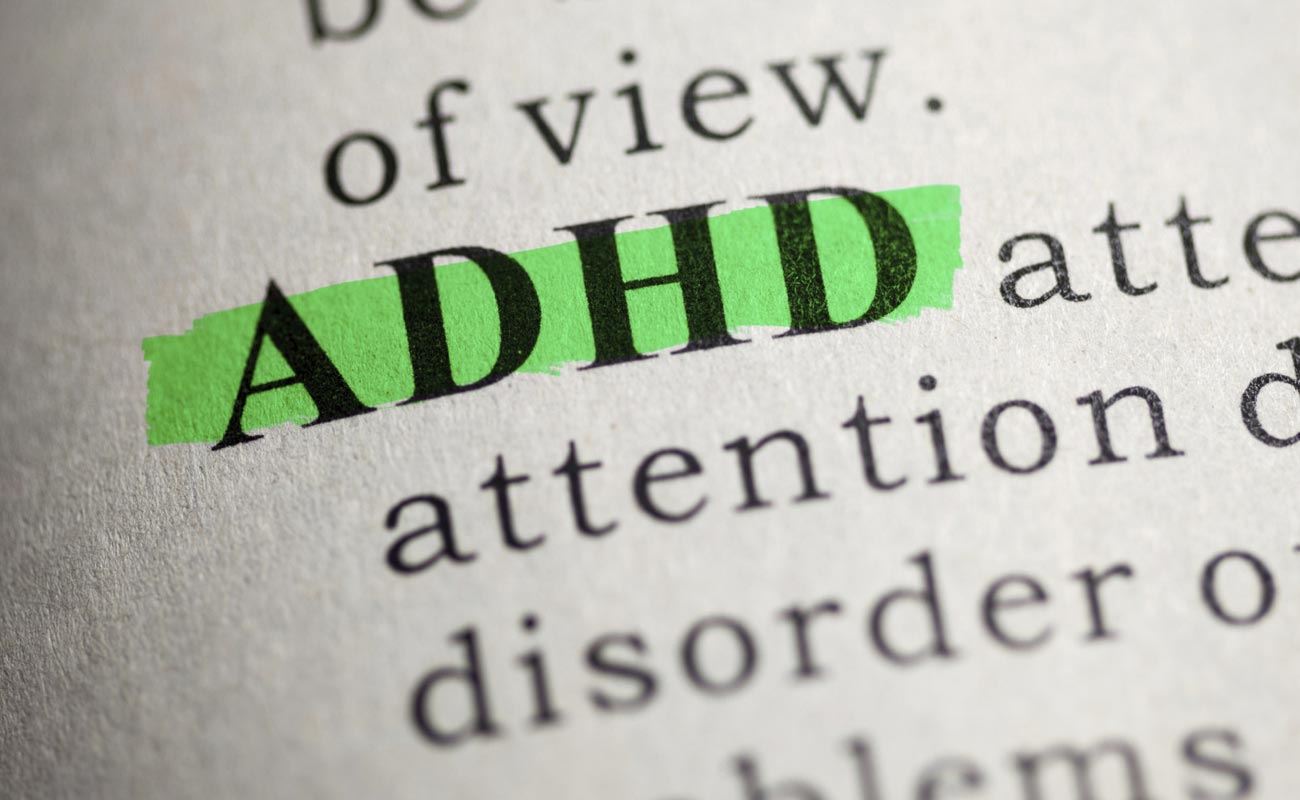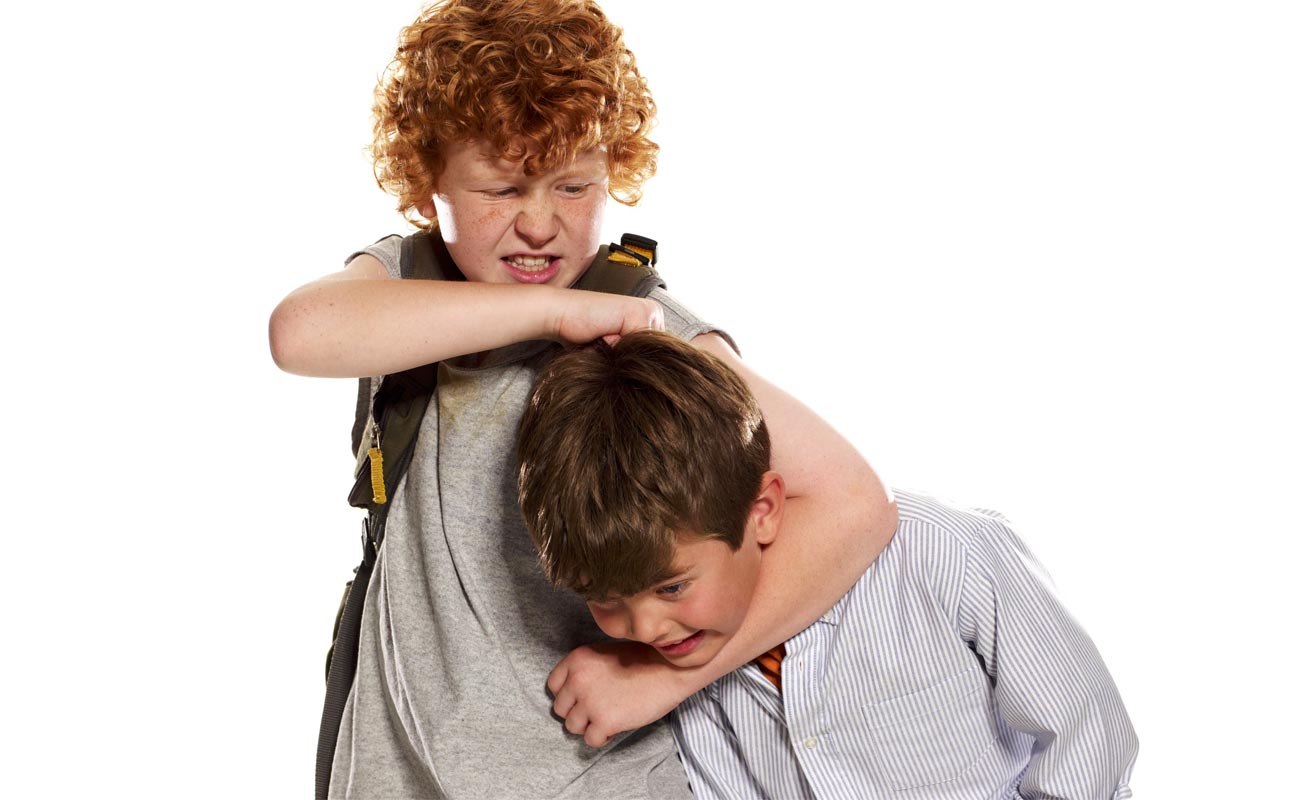
Attention-deficit/hyperactivity disorder (ADHD) is a brain disorder marked by an ongoing pattern of inattention and/or hyperactivity-impulsivity that interferes with functioning or development.
There are three groups of symptoms:
Get the facts on all of them, and learn examples of behaviors that can come with each.
You might not notice it until a child goes to school. In adults, it may be easier to notice at work or in social situations.
The person might procrastinate, not complete tasks like homework or chores, or frequently move from one uncompleted activity to another.
They might also:
One of the first questions a parent will have is “Why? What went wrong?” “Did I do something to cause this?” There is little compelling evidence at this time that ADHD can arise purely from social factors or child-rearing methods. Most substantiated causes appear to fall in the realm of neurobiology and genetics. This is not to say that environmental factors may not influence the severity of the disorder, and especially the degree of impairment and suffering the child may experience, but that such factors do not seem to give rise to the condition by themselves.
The parents’ focus should be on looking forward and finding the best possible way to help their child. Scientists are studying causes in an effort to identify better ways to treat, and perhaps someday, to prevent ADHD. They are finding more and more evidence that ADHD does not stem from the home environment, but from biological causes. Knowing this can remove a huge burden of guilt from parents who might blame themselves for their child’s behavior.
Over the last few decades, scientists have come up with possible theories about what causes ADHD. Some of these theories have led to dead ends, some to exciting new avenues of investigation.
Studies have shown a possible correlation between the use of cigarettes and alcohol during pregnancy and risk for ADHD in the offspring of that pregnancy. As a precaution, it is best during pregnancy to refrain from both cigarette and alcohol use.
Another environmental agent that may be associated with a higher risk of ADHD is high levels of lead in the bodies of young preschool children. Since lead is no longer allowed in paint and is usually found only in older buildings, exposure
to toxic levels is not as prevalent as it once was. Children who live in old buildings in which lead still exists in the plumbing or in lead paint that has been painted over may be at risk.
One early theory was that attention disorders were caused by brain injury. Some children who have suffered accidents leading to brain injury may show some signs of behavior similar to that of ADHD, but only a small percentage of children with ADHD have been found to have suffered a traumatic brain injury.
It has been suggested that attention disorders are caused by refined sugar or food additives, or that symptoms of ADHD are exacerbated by sugar or food additives. In 1982, the National Institutes of Health held a scientific consensus conference to discuss this issue. It was found that diet restrictions helped about 5 percent of children with ADHD, mostly young children who had food allergies. A more recent study on the effect of sugar on children, using sugar one day and a sugar substitute on alternate days, without parents, staff, or children knowing which substance was being used, showed no significant effects of the sugar on behavior or learning.
In another study, children whose mothers felt they were sugar-sensitive were given aspartame as a substitute for sugar. Half the mothers were told their children were given sugar, half that their children were given aspartame. The mothers who thought their children had received sugar rated them as more hyperactive than the other children and were more critical of their behavior.
Attention disorders often run in families, so there are likely to be genetic influences. Studies indicate that 25 percent of the close relatives in the families of ADHD children also have ADHD, whereas the rate is about 5 percent in the general population. Many studies of twins now show that a strong genetic influence exists in the disorder.
Researchers continue to study the genetic contribution to ADHD and to identify the genes that cause a person to be susceptible to ADHD. Since its inception in 1999, the Attention-Deficit Hyperactivity Disorder Molecular Genetics Network has served as a way for researchers to share findings regarding possible genetic influences on ADHD.
Some knowledge of the structure of the brain is helpful in understanding the research scientists are doing in searching for a physical basis for attention deficit hyperactivity disorder. One part of the brain that scientists have focused on in their search is the frontal lobes of the cerebrum. The frontal lobes allow us to solve problems, plan ahead, understand the behavior of others, and restrain our impulses. The two frontal lobes, the right and the left, communicate with each other through the corpus callosum, (nerve fibers that connect the right and left frontal lobes).

The basal ganglia are the interconnected gray masses deep in the cerebral hemisphere that serve as the connection between the cerebrum and the cerebellum and, with the cerebellum, are responsible for motor coordination. The cerebellum is divided into three parts. The middle part is called the vermis.
All of these parts of the brain have been studied through the use of various methods for seeing into or imaging the brain. These methods include functional magnetic resonance imaging (fMRI) positron emission tomography (PET), and single photon emission computed tomography (SPECT). The main or central psychological deficits in those with ADHD have been linked through these studies. By 2002 the researchers in the NIMH Child Psychiatry Branch had studied 152 boys and girls with ADHD, matched with 139 age- and gender-matched controls without ADHD. The children were scanned at least twice, some as many as four times over a decade. As a group, the ADHD children showed 3-4 percent smaller brain volumes in all regions—the frontal lobes, temporal gray matter, caudate nucleus, and cerebellum.
This study also showed that the ADHD children who were on medication had a white matter volume that did not differ from that of controls. Those never-medicated patients had an abnormally small volume of white matter. The white matter consists of fibers that establish long-distance connections between brain regions. It normally thickens as a child grows older and the brain matures.
Although this long-term study used MRI to scan the children’s brains, the researchers stressed that MRI remains a research tool and cannot be used to diagnose ADHD in any given child. This is true for other neurological methods of evaluating the brain, such as PET and SPECT.
Healthcare professionals use the guidelines in the American Psychiatric Association’s Diagnostic and Statistical Manual, Fifth edition (DSM-5), to help diagnose ADHD. This diagnostic standard helps ensure that people are appropriately diagnosed and treated for ADHD. Using the same standard across communities can also help determine how many children have ADHD, and how public health is impacted by this condition.
People with ADHD show a persistent pattern of inattention and/or hyperactivity–impulsivity that interferes with functioning or development:
In addition, the following conditions must be met:

Medication is often an important part of treatment for a child with ADHD. However, it can be a difficult decision to make as a parent.
To make the best choice, you and your child’s doctor should work together to decide if medication is a good option. If so, ask the doctor whether your child needs medication during school hours only, or on evenings and weekends as well. You and the doctor should also determine what type of medication might be best. The two main types of ADHD medications are stimulants and nonstimulants.
Central nervous system (CNS) stimulants are the most commonly prescribed class of ADHD drugs. These drugs work by increasing the amounts of the brain chemicals called dopamine and norepinephrine. The effect improves your child’s concentration and helps them focus better.
Common CNS stimulants used to treat ADHD include:
Your child’s doctor may consider nonstimulant medications when stimulants haven't worked or have caused side effects that your child finds hard to handle.
Certain nonstimulant medications work by increasing levels of norepinephrine in your child’s brain. Norepinephrine is thought to help with attention and memory. These nonstimulant treatments include:
Other nonstimulant medications can also help with ADHD. It isn’t fully known how these medications help with ADHD, but there is some evidence that they help certain chemicals work better in the part of the brain involved with attention and memory. These other nonstimulants include:
Several therapy options can help children with ADHD. Talk to your doctor about whether one or more of these options would be a good choice for your child.
Psychotherapy can be useful in getting your child to open up about their feelings of coping with ADHD. ADHD can cause your child to have problems with peers and authority figures. Psychotherapy can help children better handle these relationships.
In psychotherapy, a child may also be able to explore their behavior patterns and learn how to make good choices in the future. And family therapy can be a great way to help figure out how best to work through disruptive behaviors.
The goal of behavior therapy (BT) is to teach a child how to monitor their behaviors and then change those behaviors appropriately. You and your child, and perhaps the child's teacher, will work together. You’ll develop strategies for how your child behaves in response to certain situations. These strategies often involve some sort of direct feedback to help the child learn suitable behaviors. For instance, a token reward system could be devised to support positive behaviors.
Social skills training can sometimes be useful if a child shows serious issues dealing with social environments. As with BT, the goal of social skills training is to teach the child new and more appropriate behaviors. This helps a child with ADHD play and work better with others. A therapist may try to teach behaviors such as:
Support groups are great for helping parents of children with ADHD connect with others who may share similar experiences and concerns. Support groups typically meet regularly to allow relationships and support networks to be built. Knowing you're not alone in dealing with ADHD can be a huge relief for many parents.
Support groups can also be a great resource for ideas and strategies for coping with your child’s ADHD, especially if your child was recently diagnosed. Ask your doctor how to find support groups in your area.
Parenting skills training gives you tools and techniques for understanding and managing your child's behaviors. Some techniques may include the following:
Immediate rewards: Try using a point system or other means of immediate rewards for good behavior or work.
Timeouts: Use a timeout when your child becomes too unruly or out of control. For some children, being pulled out of a stressful or overstimulating situation can help them learn how to react more appropriately the next time a similar situation comes up.
Togetherness: Find time together every week to share a pleasurable or relaxing activity. During this time together, you can look for opportunities to point out what your child does well and praise their strengths and abilities.
Striving for success: Structure situations in a way that allows your child to find success. For instance, you might allow them to have only one or two playmates at a time so they don’t get overstimulated.
Stress management: Use methods such as meditation, relaxation techniques, and exercise to help manage stress.

One of the biggest concerns for parents of children with ADHD is their child's success in school. A lot of that success depends on how organized they are. Being organized is a skill that many children with ADHD struggle with. Simple steps such as these below can be an immense help.
Set the same routine every day. Try to make sure that waking up, bedtime, homework, and even playtime are done at consistent times. Post the schedule in a visible place. If a change must be made, make it as far in advance as possible.
Make sure that clothing, backpacks, school supplies, and play items all have a designated, clearly marked space.
Stress the importance of writing down assignments and bringing home anything needed to complete homework.
For some children with ADHD, handwriting is another obstacle to success. If necessary, see if their teacher will allow for computer use in the classroom.
Children with ADHD often receive criticism from authority figures. Then they start to expect it. If they get only negative feedback without ever hearing positive things about themselves, they'll start to think of themselves as bad.
To boost your child's self-esteem and reinforce appropriate behavior, use positive reinforcement. If your child follows the rules and behaves well, give small rewards and praise. This lets them know what behavior you prefer, while letting them know that they can be good.
Attention deficit hyperactivity disorder. (2016, March).
https://www.nimh.nih.gov/health/topics/attention-deficit-hyperactivity-disorder-adhd/index.shtml
Berwid, O. G., & Halperin, J. M. (2012, October). Emerging support for a role of exercise in attention-deficit/hyperactivity disorder intervention planning. Current Psychiatry Reports, 14(5), 543–551.
https://www.ncbi.nlm.nih.gov/pmc/articles/PMC3724411/
Clay, R. (2013, February). Easing ADHD without meds.
http://www.apa.org/monitor/2013/02/easing-adhd.aspx
Data and statistics: children with ADHD. (2017, February).
http://www.cdc.gov/ncbddd/adhd/data.html
My child had been diagnosed with ADHD – Now what? (2014, December 10).
http://www.cdc.gov/ncbddd/adhd/treatment.html
Vysniauske, R., Verburgh, L., Oosterlaan, J., and Molendijk, M.L. (2016, February 9). The effects of physical exercise on functional outcomes in the treatment of ADHD. Journal of Attention Disorders.
http://journals.sagepub.com/doi/abs/10.1177/1087054715627489
Zuekas, S., and Vitiello, B. (2012, February). Stimulant medication use among U.S. children: a twelve-year perspective. American Journal of Psychiatry, 169(2): 160–166.
http://www.ncbi.nlm.nih.gov/pmc/articles/PMC3548321/
American Academy of Pediatrics. (2001). Clinical practice guidelines: Treatment of the school-aged child with attention-deficit/hyperactivity disorder. J. of the Amer. Acad. of Pediatrics, 108 (4), 1033-1044.
Davila, R. R., Williams, M. L., & MacDonald, J. T. (1991), September 16). Clarification of policy to address the needs of children with attention deficit disorders within general and/or special education. Washington, DC: U.S. Department of Education, Office of Special Education and Rehabilitation.
Ingersoll, B., & Goldstein, S. (1993). Attention Deficit Disorder and Learning Disabilities: Realities, Myths, and Controversial Treatments. New York: Doubleday Publishing Group.
Kratochvil, C.J., Heiligenstein, J.H., Dittmann, R., et al. Atomoxetine and methyphenidate treatment in children wtih ADHD. A prospective, randomized, open-label trial. J. Am. Acad Child Adolesc Psychiatry 2002, 41, 776-84.
MTA Cooperative Group. (1999). A 14-month randomized clinical trial of treatment strategies for attention-deficit/hyperactivity disorder: Multimodal Treatment Study of Children with ADHD. Archives of General Psychiatry, 56 (12), 1073-1086.
O’Leary, K.D., & Becker, W.C. (1967). Behavior modification of an adjustment class: A token reinforcement program. Exceptional Children, 33, 637-642.
Pelham, W.E., Greiner, A.R., & Gnagy, E.M. (1997). Children’s summer treatment program manual. Buffalo, NY: Comprehensive Treatment for Attention Deficit Disorder.
Pelham, W. E. (2002) Psychosocial Interventions for ADHD. In P.S. Jensen & J.R. Cooper (Ed.), Attention Deficit Hyperactivity Disorder: State of the science • best practices (pp 12-1-12-24) New Jersey: Civic Research Institute, Inc.
Rabiner, D. (1999). ADHD Monitoring System: A systematic guide to monitoring school progress for children with ADHD. Florida: Specialty Press, Inc.
American Psychiatric Association: Diagnostic and Statistical Manual of Mental Disorders, 5th edition. Arlington, VA., American Psychiatric Association, 2013.
Submit Comment